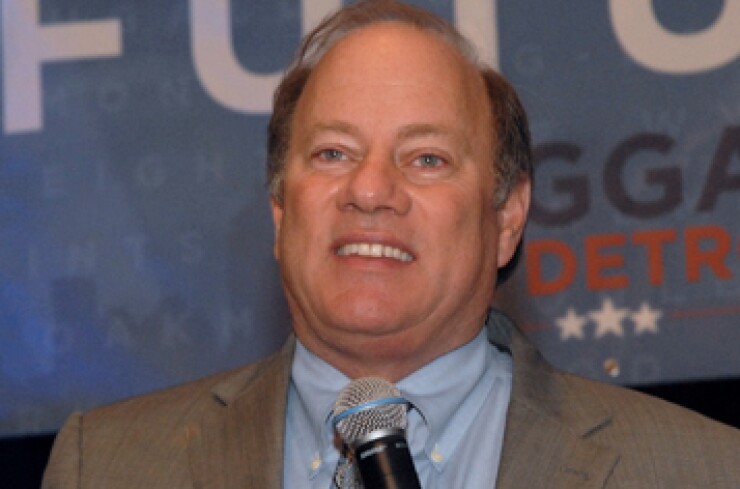
DALLAS – Detroit announced plans to boost public safety pension contributions at the cost of hiring fewer firefighters.
The Detroit Fire Department has 100 vacant positions but plans to fill only 60. The funds being freed up by leaving the 40 positions vacant will help pay for higher funding for public safety pensions.
Detroit Mayor Mike Duggan on Friday announced the deal with the Detroit Fire Department and the Detroit Fire Fighters Association that helps ease one of the more significant pressures weighing on the city's finances following its emergence from Chapter 9 late in 2014.
The deal calls for a 6% wage increase which will be directed to the firefighters' legacy pensions pending the resolution of some technical details, according to a statement from the city. Under the plan, firefighters licensed as medical first responders will also receive a 4% pay raise effective immediately.
The increase is in addition to 2.5% raises previously negotiated for 2016, 2017 and 2018.
"This is the city and union coming together to help ensure our emergency personnel won't face another pension shortfall," Duggan said.
Following its Chapter 9 exit, Detroit continues to operate under a state-appointed Financial Review Commission which must approve any collective bargaining agreements after determining that the city can fund the contracts without running a deficit. The union will submit the contract to its members immediately and if ratified, the parties hope to get City Council and FRC approval in the next several weeks.
"The DFD wage package still requires a number of approvals, but if put in place, the wage increases are budgeted as part of wages and benefits in the general fund," said Detroit finance director John Naglick. "The number of filled fire fighter operations positions is below the budgeted amount and will fund these increases."
The city did not say how much in funding the deal would provide for pension system. The additional funding into the legacy Police and Fire Retirement System comes as the city faces a nearly $500 million pension shortfall that it must begin paying in 2024.
Moody's Investors Service on Thursday shifted its outlook on the city to stable from positive citing the strain of meeting the increase in pension costs related to the legacy plans which limits the prospects for upward rating movement at this time. The rating agency affirmed the city's junk-level B2 issuer rating.
Naglick said that Detroit has already begun to set aside additional funding for the legacy plans and has hired Cheiron as its actuarial consultant to help it develop a formal long-term funding plan.
"The legacy plans were frozen as a result of the bankruptcy and the vast majority of the participants are already in pay status," said Naglick. "For that reason, we believe this will be a manageable issue that will not affect the city's recovery."
Duggan announced during his state of the city speech earlier this year that consultants who advised the city through bankruptcy had miscalculated the pension deficit by $490 million. When the city exited bankruptcy at the end of 2014, actuarial estimates in the city's Plan of Adjustment projected a payment of $111 million in 2024. In November 2015, the system's actuary raised the figure to $194.4 million.
In June, the City Council approved the set aside of $30 million from a city budget surplus in order to enable it to address a potential public pension shortfall.
The Plan of Adjustment froze the city's legacy pension plans and provided an initial funding infusion from the so-called "grand bargain" funded with help from the state and private entities. The city received a funding holiday but payments resume in 2024. The size of the city's looming payment is unclear because the value of plan assets will change, Naglick said. The additional 6% contribution announced Friday, which is based on firefighter payroll, will help ease the unfunded liabilities.
The city is planning to come to market with a refunding of $660 million of general obligation debt later this month. The deal, which would mark the city's first GO issue since exiting Chapter 9 bankruptcy protection in late 2014, is projected to generate savings of about $40 million that the city would use to provide budgetary and property tax relief.
Naglick said that the city will seek updated ratings from Moody's and S&P Global Ratings. They rate the city junk but the bonds being refunded carry higher existing ratings based on security features supported by the city's share of distributable state aid.





